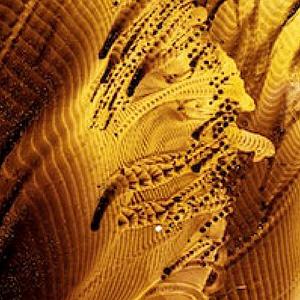- About the Course:
The SFI Undergraduate Complexity Research (UCR) program provides a 10-week residential experience in complex systems science for undergraduate students. Students develop and carry out an independent research project in collaboration with an SFI mentor and as a member of the supportive UCR community. Students learn how to combine theory, methods, and data from the physical, natural, and social sciences to ask big questions about real-world complex systems using the rigorous methods employed at SFI. Through a series of seminars and workshops, students enhance their skills as researchers and prepare for the next steps in their academic and professional journeys.
- About the Instructor(s):
 Program co-Director Chris Kempes is a resident faculty at the Santa Fe Institute. His work focuses on developing general perspectives of life that can be applied in contexts ranging from modern ecology, to astrobiology, to human institutions. Kempes is one of the creators of the Complexity Explorer Origins of Life course, which explores the question of how life emerged from an abiotic world.
Program co-Director Chris Kempes is a resident faculty at the Santa Fe Institute. His work focuses on developing general perspectives of life that can be applied in contexts ranging from modern ecology, to astrobiology, to human institutions. Kempes is one of the creators of the Complexity Explorer Origins of Life course, which explores the question of how life emerged from an abiotic world. Program co-Director Melanie Mitchell is the Davis Professor of Complexity at the Santa Fe Institute. Her current research focuses on conceptual abstraction, analogy-making, and visual recognition in artificial intelligence systems. Melanie is the author or editor of six books and numerous scholarly papers in the fields of artificial intelligence, cognitive science, and complex systems. Her online course “Introduction to Complexity” has been taken by over 25,000 students, and is one of Course Central’s “top fifty online courses of all time”.
Program co-Director Melanie Mitchell is the Davis Professor of Complexity at the Santa Fe Institute. Her current research focuses on conceptual abstraction, analogy-making, and visual recognition in artificial intelligence systems. Melanie is the author or editor of six books and numerous scholarly papers in the fields of artificial intelligence, cognitive science, and complex systems. Her online course “Introduction to Complexity” has been taken by over 25,000 students, and is one of Course Central’s “top fifty online courses of all time”.
Cate Heine attended SFI’s Undergraduate Complexity Researcher program in 2017, collaborating with Resident Faculty Chris Kempes & Geoffrey West on an urban scaling research project, and continuing on in 2018 as an alumnus. Cate is currently a Doctoral candidate at the Massachusetts Institute of Technology, at their Institute for Data, Systems, and Society, where she examines socioeconomic barriers in rapidly growing urban areas.
- How to use Complexity Explorer:
- How to use Complexity Explorer
- Enrolled students:
-
16
- Course dates:
-
01 Mar 2023 7am UTC to
02 Sep 2023 1am UTC - Prerequisites:
- Like this course?
- Donate to help fund more like it
- Twitter link
Syllabus
- Introduction
- Essential Information
- Travel
- Housing & Food
- Santa Fe
- People
- Mentors & Projects
- Schedule
- Supplementary Materials
